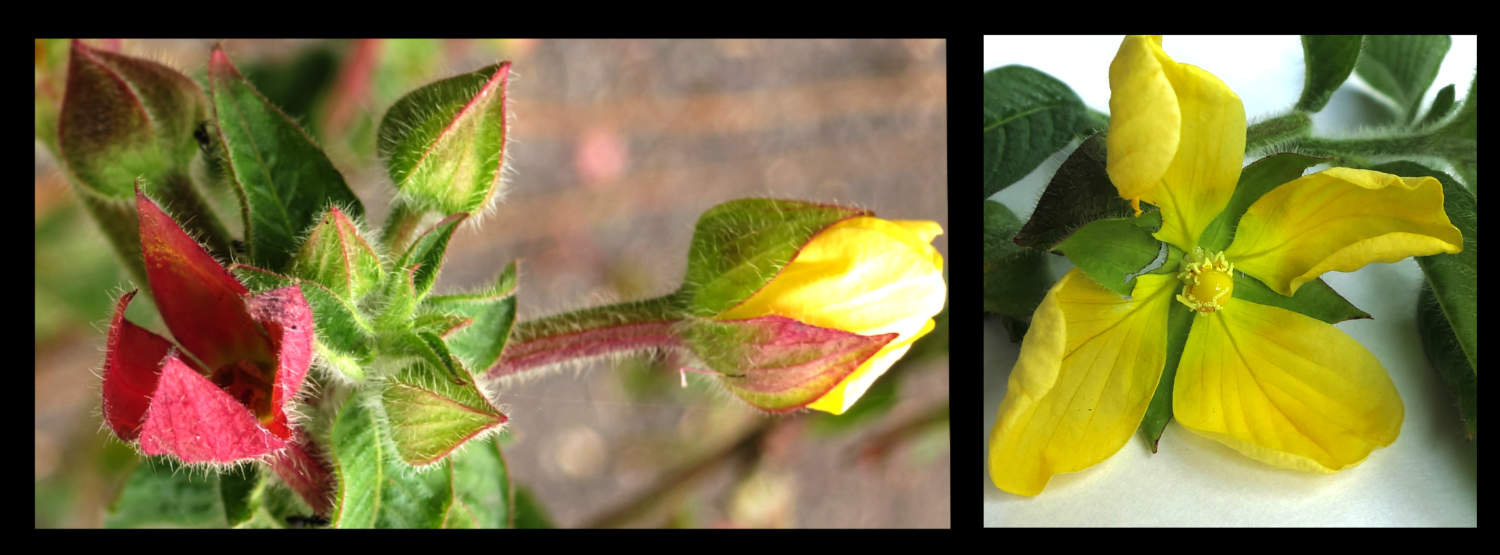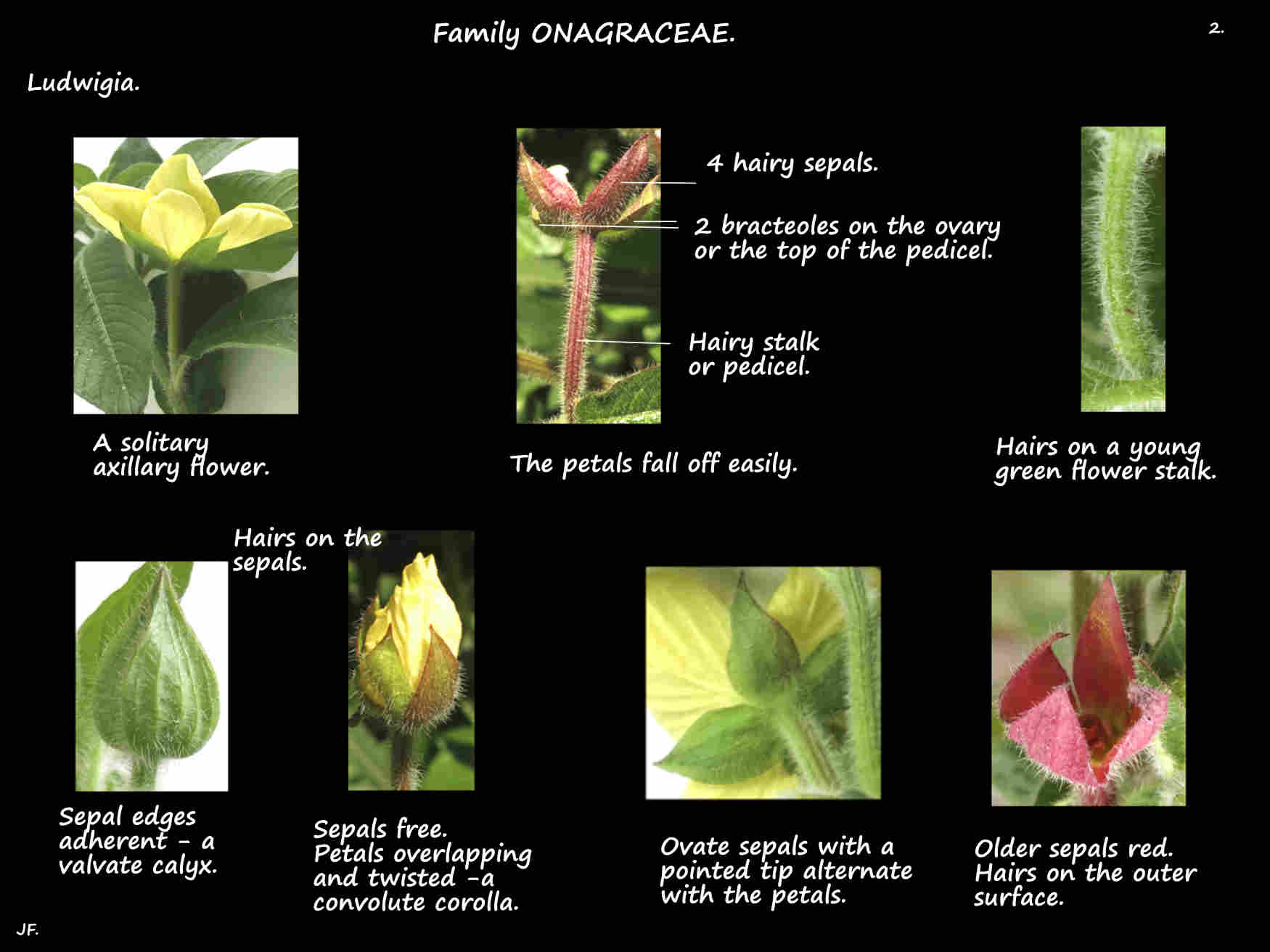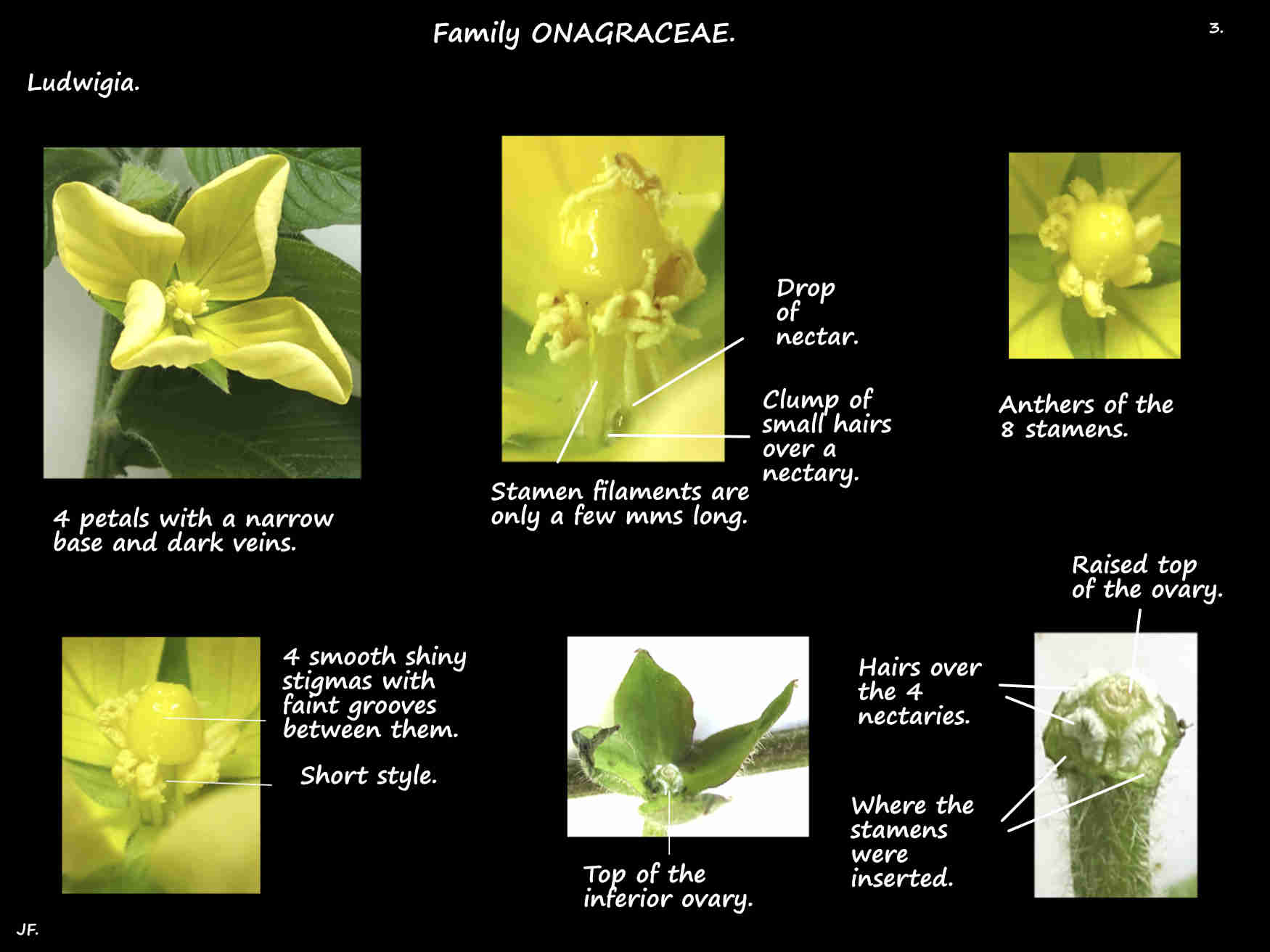Ludwigia
Family Onagraceae > Subfamily Ludwigioideae > Genus Ludwigia.
Common names include Primrose-willow, Water-primrose and Willow primrose.
Plants of the World Online recognises 87 species with others estimating 75 to 82.
Found world wide in the tropics Australia has 4 native species and a few naturalised ones.
They are very occasionally seen as garden plants in Brisbane.
They can be annual or perennial herbs, woody shrubs or aquatic or marshy plants.
The branching stems, up to 3 m long are erect or spreading and they may root at the nodes.
The green or reddish stem can be round, slightly ridged, 4-angled or have wings.
Some plants have angled stems when young but round ones when older.
Plants may have no hairs, have sparse to dense ones or have them only when young.
Leaves are alternate or opposite and occasionally in whorls.
They may have no petiole or one up to 3 cm long.
Leaves are commonly 5 to 6 cm long and 3 to 5 mm wide but they can be 1 to 35 cm long and 1 to 27 mm wide.
The blades can be linear, ovate, lanceolate or narrow to widely elliptic and may vary on one plant.
The edge is smooth, the tip is round or pointed and the base wedge-shaped.
The base may taper forming wings down the petiole.
The pinnate veins are depressed on the upper surface and prominent below.
The blades may have no hairs or a few to dense ones on both surfaces.
Inflorescences are typically a solitary flower in the axils of the upper leaves.
Around 2 to 4 cm across they are occasionally in pairs or in a terminal cluster.
They may have no stalk (pedicel) or one up to 4 cm long.
There are often 2 lanceolate, triangular or linear bracteoles from 1 to 5 mm long.
They are attached at the top of the pedicel or to the base or middle of the ovary.
The hypanthium (calyx or floral tube) is formed by fusion of the sepal, petal and stamen bases.
Some species have no hypanthium but in others it can be from 2 mm up to 2 cm long.
It can be shorter than the sepals or up to more than twice as long and it may have hairs.
The 4 (5) green or reddish sepals are from a few mms up to nearly 2 cm long.
They are triangular or ovate with a pointed tip and often have hairs externally.
There are 4 (0, 5 or 6) bright yellow or white, spreading petals from a few mms to 3 cm long.
They are obovate with a narrow base and a rounded end that may have a notch in it.
There are 4 stamens or 8 or 10 in 2 whorls that may be equal or unequal.
They are attached to the rim of the hypanthium and sometimes the base of the petals.
Filaments, from 0.2 to 9 mm long have anthers opening through longitudinal slits.
There may be 4 or 5 nectaries on the ovary at the base of the filaments.
Each nectary may be covered by a clump of short hairs.
The inferior ovary has 4 or 5 (1) locules with a flat or slightly raised upper surface.
The usually numerous ovules have axile placentation.
The short style, up to 10 mm long has a spherical (capitate) yellow stigma.
The fruit are slender oblong to obovoid capsules up to 4 cm long and 1 cm wide.
The sepals remain attached at the top and it may have ridges and hairs.
Some do not open but just disintegrate and the others open in various ways.
The yellow, brown or reddish seeds, under 1 mm long have no hairs.
J.F.





